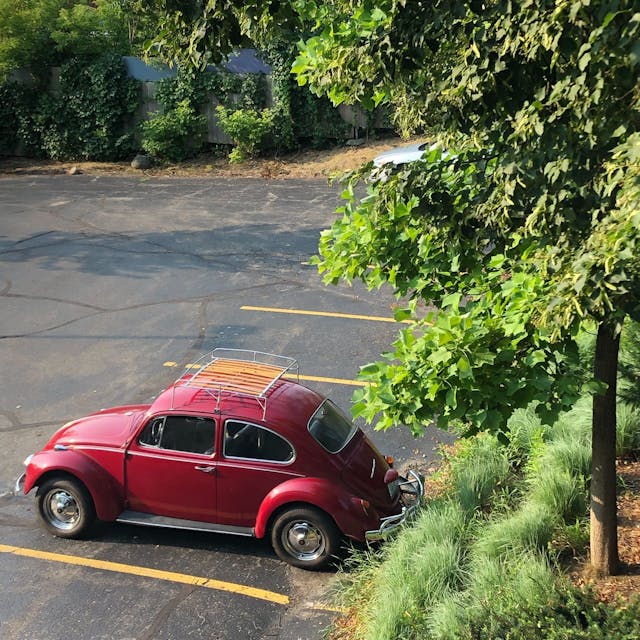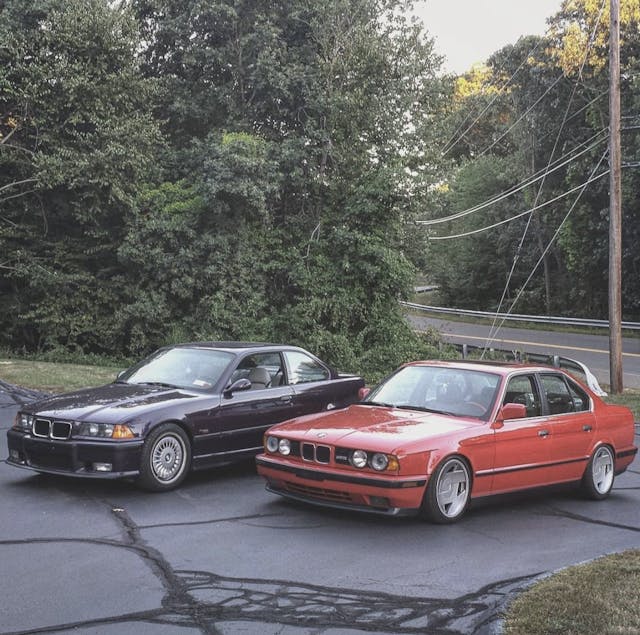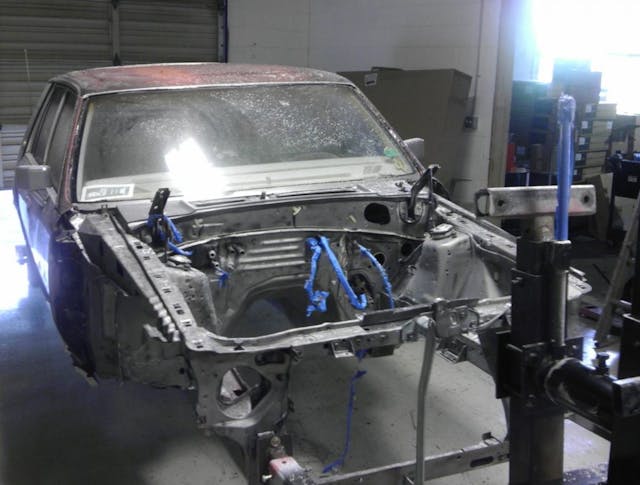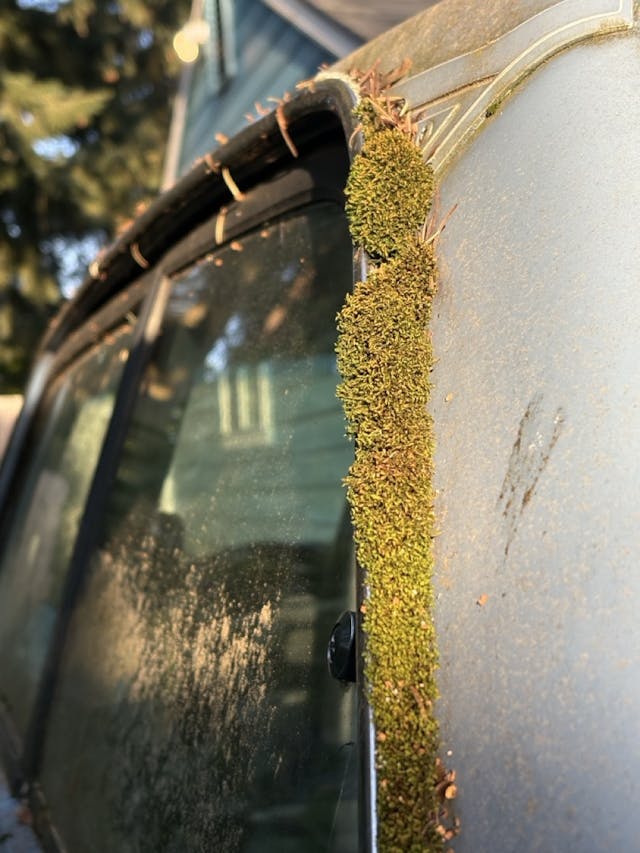
When Kyle Smith proposed this week that we disclose our biggest car-related blunders, I immediately thought of Freddie Mercury’s lyrics "And bad mistakes, I've made a few" from "We Are the Champions." This resonated with me because, over almost three decades behind the wheel, my list of errors has likely surpassed what I could easily tally. The focus was clearly on the phrase "I’ve made a few," highlighting just how many missteps have occurred during my time driving.
Back in high school, I added a large rear anti-roll bar to my Firebird but neglected the front setup, resulting in an unstable and twitchy car. Later, during a race, another competitor failed to check their mirrors before being overtaken; after spending $3K on new front-end components, my Miata was finally roadworthy again.
As shared below, my coworkers have experienced some mishaps as well. Each of us has gained valuable lessons from these incidents, and I'm certain the Hagerty Community can relate through similar experiences. Please feel free to comment with your biggest blunders in car-related adventures beneath this post.
A Bummer Bug

In 2018, I purchased a '67 VW Beetle. For more than two years, everything went smoothly; I loved both driving it and working on it. However, when the pandemic struck, things changed.
Many viewed this period as a chance to dive deep into their projects, yet my endeavor turned out to be doomed. Even though I purchased numerous components like exhaust systems, hoses, an interior shelf, and even new front trunk flooring, I didn’t install any of these items and allowed the project to languish. Perhaps it was due to the absence of gatherings to attend, or perhaps I realized that working on cars with buddies brings me more joy than tackling tasks solo. Eventually, when the vehicle stopped starting, rather than diagnosing the issue, I simply left it untouched—gathering dust over time.
In the end, I managed to sell it at a loss but surprisingly felt relieved. The vehicle had become a burden, like an albatross around my neck. However, this changed with my latest acquisition: a 1966 Volvo Amazon. This newfound possession reignited my passion for working on another project car. As it turned out, I greatly favor the handling, design, and relative safety features of the 122 model compared to what I previously owned.
It was indeed an error, but that Bug provided me with valuable lessons, and I don’t have any regrets about having owned it. Most importantly, it led me to discover my all-time favorite car repair manual. How to Maintain Your Volkswagen: Detailed Step-by-Step Instructions for the Utter Novice. The vehicle has vanished, yet I continue to peruse that volume, savoring John Muir’s prose and the indelible illustrations of Peter Aschwanden from the 1960s. Eric Weiner
Quick-Draw Nate

The largest error I made regarding vehicles was when we urgently needed to purchase one for my spouse after she got into an accident that resulted in writing off her beloved Lexus ES300. In our rush, I chose a particular brand over evaluating individual models specifically.
There was a Honda Accord Crosstour relatively close to where we lived back then, and I basically remarked, "Hondas are known for reliability—this should be a decent vehicle," without delving deeply into the specifics of that particular model. (Once more, time was against us, and we needed to make these choices much faster than I preferred.)
The Crosstour turned out to be quite troublesome, racking up numerous problems that drained our savings much faster than I found acceptable. Once we managed to sell the vehicle, I believed most of the issues—both present and potential—that plagued it were resolved. Occasionally, when I spot it driving around town, the new owner informs me they've had nothing but smooth sailing with it, which leaves me somewhat relieved.
However, due to that problem, I now strive to purchase a vehicle only when I have ample time available. (Let me assure you, I'm gathering extensive details specifically related to the particular car I intend to buy, rather than merely collecting general information about the model.) Nate Petroelje
The Great Restoration

The first genuine project car I took on revealed much more about my limitations than my capabilities. After making a poorly thought-out shift into journalism, I found myself financially strapped and sharing a third-story flat with a roommate. Each day on my commute to work, I would pass by a dilapidated orange Datsun 240Z sitting in the driveway of a modest home. Its paint job was worn out, one headlight was gone, and instead of glass for the rear window, there was clear tape stretched across the opening. I asked my partner—who later became my spouse—to accompany me so we could inquire whether the owners were interested in selling their vehicle.
They suggested possibly returning after a few weeks. She followed their advice, and they were prepared for her. The cost escapes me now, but it definitely didn’t exceed $500; otherwise, I wouldn’t have had enough money to cover it. After purchasing a fresh battery, I managed to get the Z running. Although it worked, holding the key firmly in the "Start" position was necessary at all times. This made maneuvering my manually shifted vehicle out into traffic extremely challenging, let alone driving those couple of miles home.
I somehow reached the apartment complex’s parking area and squeezed the vehicle into a far-off slot where nobody would be inconvenienced, nor attract the displeasure of our building administrator—an issue I was already facing due to attempting to conceal a Suzuki TM400 within my small downstairs indoor storage space. My ambitious restoration of the 240Z commenced; however, after looking at prices for a replacement rear window, I realized they were beyond my budget. Consequently, I opted to get some transparent acrylic glass custom-cut according to the required measurements. Surprisingly enough, this solution proved effective without causing leaks. To justify myself, I claimed that using acrylic instead had "lightened" the overall weight of the Z model. Following this, I tidied both the inside and outside parts of the car before working on tuning up the engine—my subsequent goals included fixing the ignition system along with addressing issues related to the left headlamp housing. Unfortunately, these tasks remained unfinished. As winter loomed closer, the ongoing restorations came to an abrupt end since continuing them outdoors under poor lighting conditions with inadequate equipment and financial resources felt overwhelming. Eventually, I decided to sell the Z at a decent price gain to someone who possessed their own garage, vowing not to undertake similar endeavors again unless equipped accordingly. Currently, I am fortunate enough to possess two multi-vehicle garages—one single-wide—and even a spacious workshop measuring twenty-four feet square. Yet ironically, despite all this available workspace, finding valid excuses has become essential whenever contemplating completing past undertakings. Steven Cole Smith
Understand Yourself, and Be Patient

Fifteen years ago, a significantly more ambitious young Eddy embarked on constructing his ideal Miata from scratch using every component available. This project included installing Lotus seats, applying new paint, fitting a high-quality canvas roof, upgrading the suspension system, and assembling a powerful turbocharged engine. Given that this rebuild involved stripping down the vehicle to its most basic structure, numerous challenges and financial setbacks arose during the process. Midway through construction, I required back surgery which led me to temporarily hand over the project as part of my recovery plan. The completion of the car took longer than anticipated, and naturally, several issues surfaced once it was returned to me. Feeling exasperated, I only test-drove it once before deciding to dismantle parts of it for use elsewhere.
Certain situations were unavoidable, yet numerous errors marred this narrative. Insufficient foresight: I was enticed by all the impressive setups showcased on forums without considering that a basic turbo kit would have sufficed for me. Inadequate preparation: Failing to acknowledge that unforeseen issues could arise meant not allowing enough leeway for patience. Quitting out of frustration: Typically, this leads to an expensive detour leaving one even more irritated than before.
In the end, I managed to move certain components to my racing vehicle, tend to my injuries, and gain insights from the experience. Nowadays, I approach project choices with far greater caution. Eddy Eckart
Lengthy Wait Times and Issues with Valets

The root of my major errors often lies in emotional attachment. It’s challenging for me to part ways with the cars I purchase and create lasting experiences with, leading me to acquire only a few over time and thus missing out on diversity. Coupled with this, my strong preference for certain brands—for instance, hurrah for 1990s BMW M series! —results in an even more limited range of exposure. Nonetheless, I genuinely enjoy various types of vehicles. Fortunately, my work allows me to sit behind the wheel of numerous models that I may never personally own.
Specifically, my largest error was handing over the car keys to the valet driver who smoked inside my vehicle. Volvo 240 While also really frying the clutch! Aren’t you fond of tipping $5 for $500 worth of damage? Alex Sobran
Do Not Let Perfection Hinder Progress

Performing a full rotisserie restoration on Project Valentino turned out to be my greatest error. It wasn’t due to poor execution; rather, I realize now that simply repairing each rust spot individually would have sufficed for me. Occasionally, even when you can utilize a specialized facility like one skilled at rotisserie restorations, it might not always lead to better outcomes! — Sajeev Mehta
When Your Eyes Outsize Your Appetite

Over the years, I've had relatively few vehicles, but only one stands out as a poor choice—the Scotia Blue Volvo 242 that’s been parked in my driveway for about ten years now. Initially, I believed it perfectly matched my desires: lowered suspension, improved camshaft, attractive factory paint job, and an excellent cabin. Despite being somewhat geared towards youthful racing enthusiasts, I looked forward to personalizing it. To customize it further, I acquired inexpensive Virgo rims which I refurbished along with fitting new Falken tires. Perhaps I ought to have left well enough alone at this point.
Rather than proceeding properly, I began collecting components (which likely screamed to seasoned automotive enthusiasts, "this fellow hasn’t got a clue"): an overly trimmed engine block paired with a very uneven camshaft, large intake valves, and an exhaust setup that cost far too much. This collection has remained untouched in my garage ever since. The previous owner had fitted excessively firm adjustable shock absorbers up front, which made daily drives less enjoyable. In the past ten years, these Falken tires have seen little use—only around 500 miles—and despite being practically unused, they could now pose significant risks due to their age.
Indifference and surrender gradually overwhelmed me, leaving me without the motivation or strength to replace the front suspension on my own. Additionally, I wasn’t inclined to foot the bill for someone else to handle it. Furthermore, I lack "car buddies" whom I might have compensated with brews to lend a hand. Nowadays, my Volvo, coated in moss and dripping sap, serves as a perfect example of Grace Jarvis' compelling narrative. What Occurs When Vehicles Are Left Idle, And it serves as an embarrassing testament to my automotive shortcomings every single time I set foot on my driveway. Stefan Lombard
Kyle’s First Corvair

I believe my greatest error in the realm of automobiles was simultaneously my finest decision: Purchasing a vehicle from 1965. Corvair From the salvage yard just beyond the edge of town when I was 17.
It was completely worthless. Junkyards usually don't bother selling such items. nice The car was extensively corroded; rust had spread not only to typical areas but also to many unusual spots. The engine, a 95-horsepower flat-six, was completely seized. When I dismantled it, I needed three different hammers just to remove the pistons and cylinders.
Ultimately, it turned out to be a vehicle that I merely dismantled. During my summertime employment, I tucked away dollars inside a piggy bank and gazed at the Clark’s Corvair catalogue, pondering over which engine overhaul set I should purchase. In time, I used up all those saved funds to acquire a functioning and driveable 1964 Corvair; one with which I engaged in activities beyond simply taking things apart.
Perhaps I required the adventure and thrill of acquiring that awful vehicle. Looking back now, however, it doesn't seem so worthwhile. It was bought for $800 (with delivery included at my parents' place) and then offloaded after three years for $200, along with some new components just returned from the repair shop. Isn't a misstep simply a lesson disguised under another guise? — Kyle Smith
The post Our Most Notable Automotive Blunders appeared first on Hagerty Media .
Interested in buying a car? Discover your perfect match on the MSN Autos Marketplace.
Posting Komentar
Posting Komentar